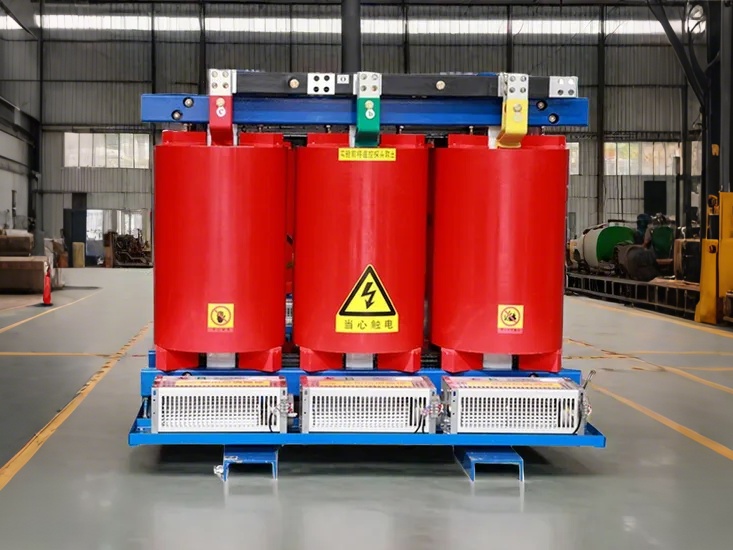Traditional oil-immersed transformers use oil as an insulating and cooling medium to maintain optimal operating temperatures and ensure efficient performance. However, with growing concerns over environmental impact, safety, and sustainability, oil-free transformers have emerged as an innovative solution. These transformers use alternative materials such as solid insulation and air or natural ester-based fluids to provide the same level of performance without the need for oil. In this article, we will explore the concept of oil-free transformers, their working principles, and the advantages they offer over conventional oil-immersed transformers.
What Are Oil-Free Transformers and How Do They Work?
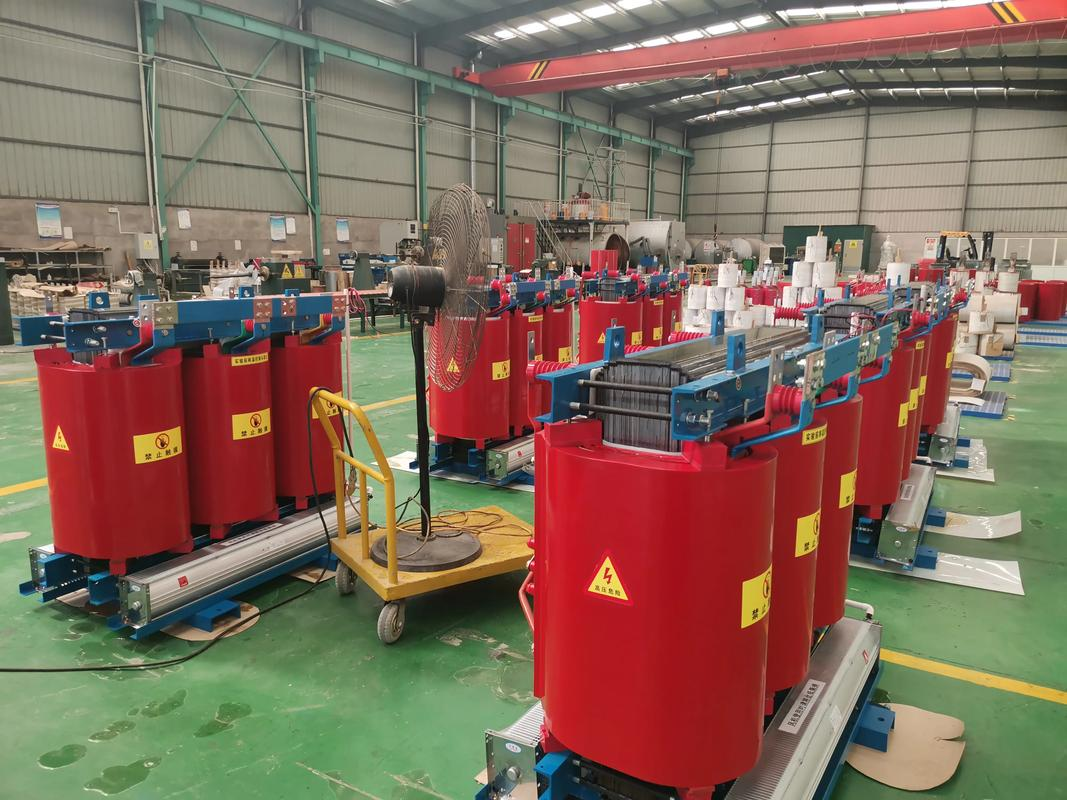
Oil-free transformers are an innovative solution to traditional transformer designs that rely on oil as a cooling and insulation medium. These transformers eliminate the need for oil altogether, which not only reduces environmental concerns but also offers a range of operational advantages. Oil-free transformers are increasingly being used in sensitive environments where safety, reliability, and sustainability are paramount.
In this article, we will explore what oil-free transformers are, how they function, their benefits, and why they are gaining popularity in various industries.
What Is an Oil-Free Transformer?
An oil-free transformer is an electrical transformer that operates without the use of mineral oil or other liquid coolants. Instead of oil, these transformers use alternative cooling and insulation methods, such as dry-type insulation systems or synthetic fluids. While oil-filled transformers have been the standard for decades due to their efficient cooling properties, oil-free transformers are now seen as an environmentally friendly and safer alternative.
Key Features of Oil-Free Transformers
- Dry-Type Insulation: Many oil-free transformers use solid insulation materials, such as epoxy or resin, for electrical insulation. These materials provide effective insulation without the need for oil.
- Air Cooling: Some oil-free transformers rely on air-cooled systems to dissipate heat. In this design, the transformer is equipped with air ducts and cooling fans to maintain an optimal operating temperature.
- Natural Cooling: Some transformers use natural convection to allow heat to escape the transformer’s core and windings without the need for forced cooling mechanisms.
- Innovative Fluids: Some newer oil-free transformers use synthetic fluids or gaseous insulation as alternatives to oil, providing better environmental properties while maintaining the cooling benefits.
How Do Oil-Free Transformers Work?
Oil-free transformers utilize various advanced technologies to perform the same function as oil-filled transformers—converting high-voltage electricity to lower voltage for use in residential, industrial, or commercial applications. These transformers work based on the principles of electromagnetic induction, but their design and cooling mechanisms are significantly different from traditional oil-filled types.
1. Cooling Mechanisms
Instead of relying on oil to cool the system, oil-free transformers use the following methods:
-
Air Cooling: Some oil-free transformers are designed to use air as the primary coolant. The transformer’s core and windings are placed in a sealed enclosure with air circulation. The air absorbs the heat generated during the operation of the transformer, helping to maintain an optimal temperature.
-
Natural Convection: In natural convection systems, the transformer relies on the principle of warm air rising. The transformer’s design encourages the upward flow of warm air, which is replaced by cooler air from the environment. This natural heat dissipation method is particularly effective for smaller transformers or in locations with stable ambient temperatures.
-
Forced Air Cooling: Some oil-free transformers may include fans or blowers to force air through the transformer’s internal components, providing additional cooling power. This approach is common in medium- to large-sized transformers that need more effective heat dissipation than what natural convection can offer.
2. Insulation Systems
The key to an oil-free transformer’s ability to safely and efficiently operate without oil lies in its insulation system. Instead of liquid insulation, oil-free transformers use solid materials like epoxy resin, paper-based insulation, or fiberglass. These materials are carefully selected to handle high temperatures, electrical stresses, and environmental factors.
-
Epoxy Insulation: Epoxy resin is a common material used in oil-free transformers due to its excellent insulation properties, high dielectric strength, and durability. It provides excellent protection against electrical faults and can withstand high voltages.
-
Paper and Paperboard Insulation: In some designs, the use of specially treated paperboard insulation is utilized, which offers a cost-effective and reliable solution for preventing electrical faults in transformers.
-
Gaseous Insulation: In some advanced oil-free transformer designs, SF6 (sulfur hexafluoride) or air-insulated systems may be used for insulation instead of oil, offering a reliable and environmentally friendly solution.
Advantages of Oil-Free Transformers
Oil-free transformers have a variety of benefits that make them appealing, particularly in modern, eco-conscious, and safety-driven industries. Here are some key advantages:
1. Environmental Benefits
One of the primary advantages of oil-free transformers is their minimal environmental impact:
- No Risk of Oil Spills: Oil-filled transformers can suffer from oil leaks that can contaminate the environment. Oil-free transformers eliminate this risk entirely.
- Eco-Friendly Materials: Many oil-free transformers use materials that are more environmentally friendly compared to mineral oil. For instance, epoxy resin or air-based insulation do not pose the same environmental hazards that oil can.
- Reduced Carbon Footprint: By using air cooling and natural convection methods, oil-free transformers require less energy for cooling, which reduces the overall carbon footprint of their operation.
2. Safety Improvements
Oil-free transformers have safety benefits that make them an attractive choice for certain applications:
- Fire Safety: Traditional oil-filled transformers are more susceptible to fire hazards because oil is flammable. In contrast, oil-free transformers are much less likely to catch fire.
- Reduced Explosion Risk: In the case of electrical faults, oil-filled transformers can experience dangerous explosions due to the flammable nature of the oil. Oil-free designs significantly reduce this risk.
- No Maintenance of Oil: Oil-filled transformers require periodic oil maintenance and replacement to ensure safe operation. Oil-free transformers eliminate the need for these procedures.
3. Reduced Maintenance and Operational Costs
Oil-free transformers typically require less frequent maintenance and monitoring:
- No Oil Testing: Oil-free transformers do not require the complex testing and analysis that oil-filled transformers do, such as dissolved gas analysis (DGA), which can add to operational costs.
- Less Contamination: Without oil, the transformer is less prone to contaminants like moisture or airborne particles entering the system.
- Longer Lifespan: Oil-free designs, with their solid insulation systems and simple air-cooled methods, often result in longer-lasting transformers with fewer repairs needed.
4. Space-Efficiency
Oil-free transformers are often more compact than traditional oil-filled designs because they do not require the large oil tank and additional cooling infrastructure. This makes them ideal for applications where space constraints are a concern, such as in:
- Urban environments
- Industrial plants with limited space
- Mobile or temporary setups
Applications of Oil-Free Transformers
Oil-free transformers are particularly well-suited for environments and applications where safety, environmental impact, and space constraints are a top priority. Common applications include:
- Urban Substations: In densely populated areas, oil-free transformers offer a safer and more environmentally friendly option for electricity distribution.
- Indoor Facilities: In places like commercial buildings, data centers, and hospitals, where safety and cleanliness are critical, oil-free transformers provide a compact and reliable solution.
- Renewable Energy: Oil-free transformers are used in renewable energy applications, such as solar power plants and wind farms, where environmental concerns are prioritized.
- Marine and Offshore: Due to their compact design and lack of oil, these transformers are commonly used in marine and offshore platforms, where space is limited, and safety is critical.
What Are the Key Types of Oil-Free Transformers?
Oil-free transformers are becoming increasingly popular due to their environmental benefits, safety advantages, and improved operational efficiency. Unlike traditional oil-filled transformers, which use mineral oil as an insulation and cooling medium, oil-free transformers utilize alternative methods and materials. These transformers are essential in environments where space, safety, and environmental concerns are top priorities.
In this article, we will explore the key types of oil-free transformers, their distinctive features, and their applications in various industries.
Key Types of Oil-Free Transformers
Oil-free transformers are categorized based on their cooling systems, insulation materials, and the specific needs they address. Below are the primary types of oil-free transformers, each offering unique benefits depending on their design and usage.
1. Dry-Type Transformers (Air-Cooled)
Dry-type transformers, also known as air-cooled transformers, are the most common type of oil-free transformer. They use solid insulation materials and rely on natural air circulation to dissipate heat.
Key Features:
- Solid Insulation: Dry-type transformers use materials such as epoxy resin or fiberglass for insulation, offering high dielectric strength and durability.
- Air-Cooled: These transformers are designed with heat dissipation in mind, using natural or forced air circulation to maintain optimal temperatures.
- No Oil: There is no requirement for mineral oil, making these transformers safer and more environmentally friendly.
Applications:
- Indoor Facilities: Dry-type transformers are commonly used in commercial buildings, hospitals, and industrial plants where oil leakage could cause significant risks.
- Urban Substations: Their compact size and fire-resistant properties make dry-type transformers ideal for urban environments with limited space and safety concerns.
2. Cast Resin Transformers
Cast resin transformers are a specialized form of dry-type transformer, where the winding is encased in resin to provide enhanced insulation and protection against environmental elements. The resin solidifies to create a solid, air-tight insulating barrier around the windings.
Key Features:
- Resin Encapsulation: The winding is completely encapsulated in a high-quality resin, providing excellent electrical insulation.
- Enhanced Durability: Cast resin transformers are highly resistant to moisture and dust, making them suitable for harsher environmental conditions.
- No Need for Oil: These transformers do not use any oil for cooling or insulation, relying instead on solid resin and air cooling.
Applications:
- Outdoor Applications: Cast resin transformers are suitable for use in outdoor installations, including remote locations where access to cooling systems may be limited.
- High-Humidity Environments: Their resistance to moisture makes them ideal for applications where the transformer may be exposed to high humidity, such as in coastal areas.
3. Gas-Insulated Transformers (GIT)
Gas-insulated transformers are another form of oil-free transformer that uses an insulating gas, such as sulfur hexafluoride (SF6), to insulate the transformer windings. These transformers are designed to operate in high-voltage applications, offering a compact and safe design with minimal environmental impact.
Key Features:
- SF6 Gas Insulation: These transformers use SF6, a non-flammable gas, to insulate the windings. The gas provides excellent dielectric strength and ensures that the transformer operates safely even at high voltages.
- Compact Design: Gas-insulated transformers are much smaller than their oil-filled counterparts, offering a space-efficient solution for high-voltage power distribution.
- Low Maintenance: Gas-insulated transformers typically require less maintenance than oil-filled transformers due to the absence of oil-related issues.
Applications:
- Substations and High-Voltage Applications: Gas-insulated transformers are commonly used in high-voltage substations and transmission networks where space constraints and safety are critical.
- Indoor Installations: Since these transformers use gas instead of oil, they are suitable for indoor installations where fire risks need to be minimized.
4. Solid Insulated Transformers
Solid insulated transformers use solid dielectric materials such as ceramics, plastics, or composite materials for insulation, rather than oil or gas. These transformers are particularly suited for applications where both reliability and environmental impact are critical.
Key Features:
- Solid Insulation Materials: The use of solid dielectrics eliminates the need for oil, making these transformers environmentally friendly.
- High Voltage and Compact Design: Solid insulated transformers are ideal for environments that require high-voltage operation in confined spaces.
- No Risk of Leakage: Unlike oil-filled transformers, solid insulated designs eliminate the risk of oil leakage or fire hazards.
Applications:
- Renewable Energy Projects: These transformers are widely used in solar power plants, wind farms, and electric vehicle charging stations, where eco-friendly solutions are prioritized.
- Industrial and Commercial Installations: Solid insulated transformers are suitable for industrial applications where space and safety are of the essence.
Comparison of Oil-Free Transformer Types
The table below provides a comparison of the four primary types of oil-free transformers based on their features and applications:
| Transformer Type | Insulation Material | Cooling Method | Key Benefits | Common Applications |
|---|---|---|---|---|
| Dry-Type Transformer | Epoxy Resin, Fiberglass | Air Cooling (Natural or Forced) | Simple design, eco-friendly, low maintenance | Indoor facilities, urban substations |
| Cast Resin Transformer | Resin (Epoxy or Polyester) | Air Cooling | Moisture resistant, highly durable, compact | Outdoor applications, high-humidity environments |
| Gas-Insulated Transformer (GIT) | SF6 Gas | SF6 Gas Insulation | Space-efficient, low maintenance, high voltage operation | High-voltage substations, indoor installations |
| Solid Insulated Transformer | Ceramic, Plastic, Composite | No Cooling Required | High reliability, compact, no leakage risk | Renewable energy plants, electric vehicle stations |
Benefits of Oil-Free Transformers
Oil-free transformers offer several advantages over traditional oil-filled designs, including:
1. Environmental Benefits
Oil-free transformers are more environmentally friendly, as they do not use mineral oil, which can be harmful in the case of leaks. By using solid insulation materials or gases, these transformers significantly reduce the risk of contamination and environmental damage.
2. Safety Improvements
Without the need for flammable oils, oil-free transformers present a lower fire risk and less potential for explosion in case of electrical faults. This makes them safer in critical installations.
3. Reduced Maintenance
Oil-free transformers generally require less maintenance compared to oil-filled designs. For instance, there is no need for oil replacement, and the risk of oil contamination is eliminated, reducing maintenance costs and efforts.
4. Space Efficiency
Many oil-free transformers, particularly gas-insulated and solid insulated designs, are much more compact than their oil-filled counterparts, making them ideal for installations with limited space.
What Are the Main Advantages of Oil-Free Transformers Over Oil-Immersed Transformers?
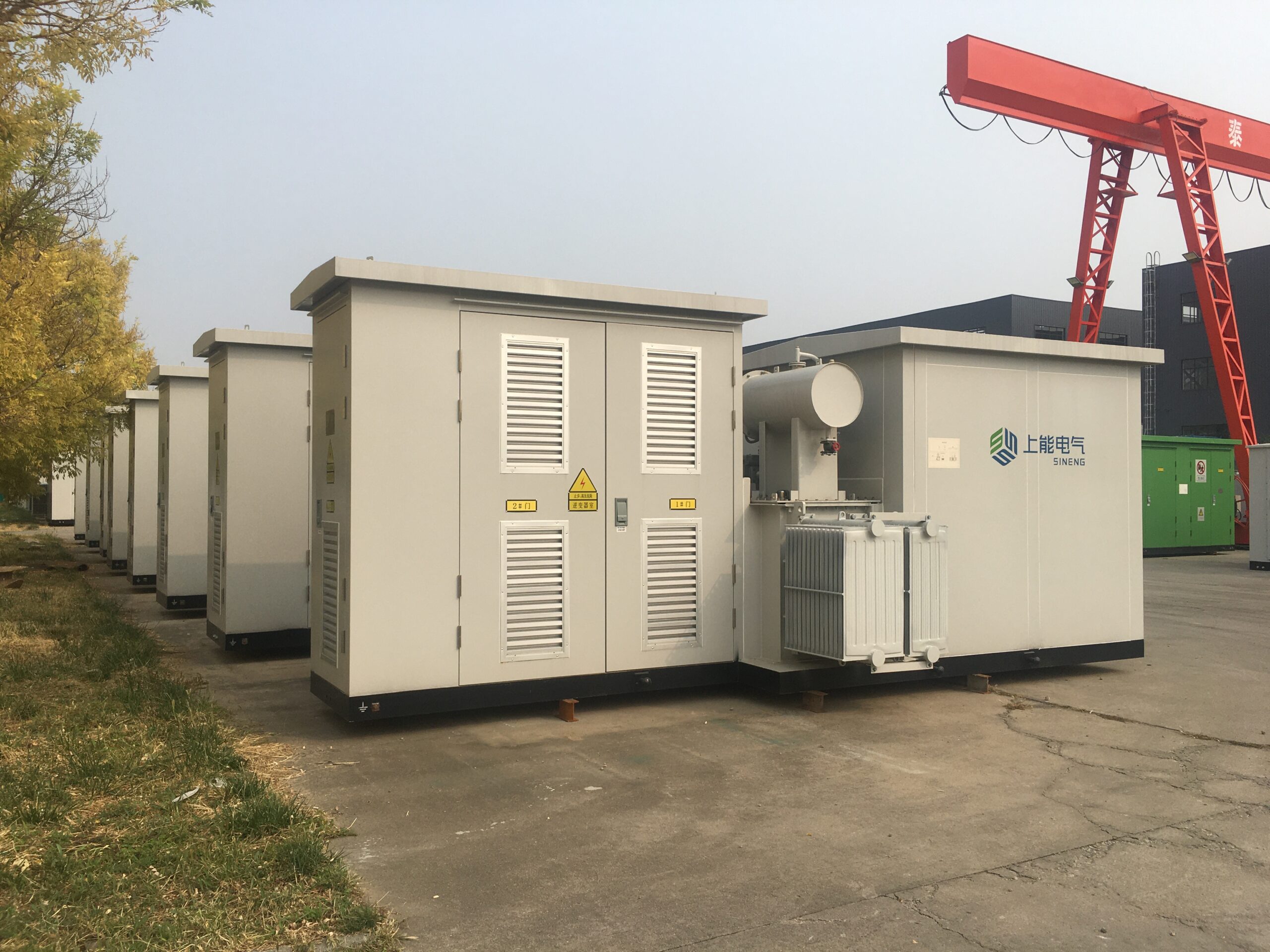
Oil-free transformers are gaining prominence in the power industry due to their numerous benefits over traditional oil-immersed transformers. As power systems evolve, the shift toward safer, environmentally-friendly, and cost-efficient technologies has made oil-free transformers an increasingly popular choice.
This article explores the main advantages of oil-free transformers over oil-immersed transformers, comparing their design, safety, environmental impact, and operational efficiency.
Main Advantages of Oil-Free Transformers Over Oil-Immersed Transformers
Oil-immersed transformers have been the standard for many years, using mineral oil to provide both cooling and insulation. However, while oil-immersed transformers have their benefits, oil-free transformers offer distinct advantages in several key areas.
1. Environmental Benefits and Safety
Oil-free transformers are more environmentally friendly than their oil-immersed counterparts. Mineral oil, which is typically used in oil-immersed transformers, is flammable and poses a risk in the event of a leak or fire. Here’s why oil-free transformers are a safer choice:
- No Risk of Oil Spills: Oil-free transformers, whether they use air, resin, gas, or solid insulation materials, eliminate the risk of oil leakage and spills, which can cause environmental contamination.
- Lower Fire Risk: Oil is flammable, which means oil-immersed transformers pose a fire hazard, particularly in fault conditions. Oil-free transformers, such as dry-type and cast resin transformers, do not rely on flammable oils, reducing the likelihood of fire outbreaks.
- Eco-Friendly: Oil-free transformers use materials that are more sustainable, such as resins or SF6 gas, which have a much lower environmental impact.
Environmental Impact Comparison:
| Aspect | Oil-Free Transformers | Oil-Immersed Transformers |
|---|---|---|
| Risk of Oil Spills | No risk | High risk of leakage and spills |
| Fire Risk | Lower, non-flammable materials | Higher, flammable oil used |
| Environmental Impact | Eco-friendly materials, sustainable | Oil contamination in case of leaks |
2. Reduced Maintenance and Operating Costs
One of the significant advantages of oil-free transformers is the reduced maintenance and lower operating costs:
- No Oil Replacement: Oil-immersed transformers require periodic oil changes to maintain the quality of the oil and ensure proper cooling and insulation. Oil-free transformers do not require this, saving costs related to oil maintenance.
- Minimal Maintenance Needs: Since there is no oil to monitor or replace, and no need to worry about oil leaks, oil-free transformers typically require less maintenance and have a longer lifespan. This results in reduced downtime and fewer operational interruptions.
- Cleaner Operation: Oil-free transformers do not suffer from oil contamination, which can affect performance and lead to costly repairs in oil-immersed designs.
3. Space Efficiency
Oil-free transformers are often more compact than oil-immersed transformers. This is particularly beneficial in applications where space is constrained:
- Smaller Footprint: Dry-type transformers, in particular, do not require large tanks of oil or extensive cooling systems, making them ideal for space-limited installations.
- Indoor Applications: Oil-free transformers are better suited for indoor installations, such as commercial buildings, hospitals, and urban substations, where space is at a premium.
4. Higher Safety and Reliability
Oil-free transformers provide enhanced safety and reliability in a variety of applications:
- Lower Risk of Overheating: Some oil-free transformers, such as cast resin transformers, are designed to perform efficiently under extreme temperatures, reducing the risk of overheating and improving operational reliability.
- Reduced Risk of Toxic Emissions: In the event of a fault or overheating, oil-immersed transformers can produce hazardous toxic fumes from the oil. Oil-free transformers eliminate this risk by using non-toxic and non-flammable materials.
- Improved Longevity: Due to the absence of oil-related issues such as oil degradation or contamination, oil-free transformers often last longer than their oil-immersed counterparts.
5. Lower Environmental Impact and Compliance
Oil-free transformers are easier to handle in terms of environmental regulations and sustainability goals:
- Compliance with Regulations: Increasingly strict environmental regulations around the use of oils in transformers make oil-free transformers a more compliant solution, particularly in regions with stringent environmental laws.
- Sustainability: As industries focus on green technologies and eco-friendly solutions, oil-free transformers align well with sustainability goals, as they do not rely on oil that could lead to pollution or hazardous waste disposal.
6. Better Performance in Harsh Environments
Oil-free transformers, such as cast resin and gas-insulated models, are particularly well-suited for use in harsh environments:
- Moisture and Corrosion Resistance: Cast resin transformers are designed to be moisture-resistant and corrosion-proof, making them ideal for use in high-humidity or coastal areas where oil-immersed transformers might fail due to water ingress.
- Extreme Temperature Tolerance: Oil-free transformers are typically more tolerant of high temperatures, reducing the chances of overheating and ensuring consistent performance in challenging conditions.
7. Aesthetic and Architectural Integration
Oil-free transformers often have a more aesthetically pleasing design, which can be crucial for applications where appearance matters, such as:
- Urban Infrastructure: In cities and urban settings, where transformer stations must blend with surrounding architecture, the compact and clean design of oil-free transformers makes them easier to integrate into urban spaces.
- Sleek and Compact: Oil-free designs are generally more sleek and can be customized to fit specific aesthetic needs, making them ideal for settings that require a combination of function and form.
Comparison: Oil-Free vs Oil-Immersed Transformers
The table below summarizes the key advantages of oil-free transformers over oil-immersed transformers:
| Feature | Oil-Free Transformers | Oil-Immersed Transformers |
|---|---|---|
| Fire Risk | Low, non-flammable materials | High, due to use of flammable oil |
| Maintenance Requirements | Low, no oil changes required | High, oil replacement and monitoring |
| Space Efficiency | Compact, suitable for tight spaces | Requires large tanks for oil |
| Environmental Impact | Eco-friendly, no oil contamination risk | Oil leakage can cause environmental harm |
| Safety | Higher, reduced toxic emissions | Lower, risk of oil leaks and fumes |
| Longevity | Longer, less maintenance required | Potentially shorter due to oil degradation |
How Do Oil-Free Transformers Contribute to Sustainability and Environmental Protection?
Oil-free transformers are revolutionizing the power distribution industry, not only for their efficiency and safety but also for their significant contribution to sustainability and environmental protection. Unlike traditional oil-immersed transformers, oil-free transformers utilize advanced technologies and materials that reduce their environmental impact and make them a greener alternative.
This article explores how oil-free transformers contribute to a more sustainable and environmentally-friendly electrical grid by reducing pollution, energy consumption, and resource waste.
1. Elimination of Oil-Related Environmental Risks
One of the most significant environmental concerns with traditional oil-immersed transformers is the risk of oil leaks. Mineral oil, commonly used in oil-immersed transformers, is flammable and toxic, posing serious environmental hazards when leaked into the ground or water systems. The following points illustrate the oil-free transformers' benefits in this regard:
- No Oil Spills: Oil-free transformers eliminate the risk of oil spills, which can cause environmental contamination, soil degradation, and water pollution. By not relying on oil, these transformers remove the need for oil maintenance, oil disposal, and related risks.
- No Hazardous Waste: Since oil-free transformers do not use mineral oil, they produce no hazardous waste for disposal. In contrast, oil-immersed transformers require oil recycling and disposal when the oil degrades, leading to additional costs and environmental impacts.
Oil-free transformers typically use dry-type, cast resin, or gas-insulated technologies that avoid the environmental pitfalls of oil-based systems, ensuring they are safer for both workers and the ecosystem.
2. Lower Carbon Footprint and Energy Efficiency
The operation and manufacture of transformers can contribute to significant carbon emissions. However, oil-free transformers, with their efficient designs, have the potential to reduce the overall carbon footprint of power distribution systems:
- Efficient Cooling Systems: Oil-free transformers often rely on air, resin, or gas as insulating and cooling mediums. These methods are not only more sustainable but often more energy-efficient compared to traditional oil-based cooling systems.
- Lower Energy Losses: By eliminating the use of mineral oil, oil-free transformers can also be more energy-efficient, reducing the overall energy loss during transformer operation. This leads to a more sustainable use of energy resources.
- Less Energy Consumption for Maintenance: Oil-immersed transformers require additional energy to pump and circulate oil for cooling, while oil-free transformers do not need these additional components, further reducing the energy consumption associated with their operation.
Oil-free transformers, especially dry-type transformers, are designed with energy-efficient materials that reduce heat generation and improve overall performance, aligning with global goals of reducing greenhouse gas emissions and conserving energy.
3. Compliance with Stringent Environmental Regulations
As governments and regulatory bodies around the world impose stricter environmental regulations, oil-free transformers are better positioned to meet these requirements due to their eco-friendly design:
- Reduced Environmental Footprint: Many countries have introduced laws that limit the use of toxic or flammable materials in electrical infrastructure. Oil-free transformers, made from non-toxic, non-flammable materials, comply with these regulations without requiring special environmental permits or controls.
- Easier Recycling and Disposal: The components of oil-free transformers are often easier to recycle compared to oil-immersed transformers, which require special handling and disposal procedures for their oil and waste materials.
By complying with these regulations, oil-free transformers help utilities avoid penalties, reduce their environmental liabilities, and support green energy initiatives.
4. Improved Safety and Reduced Risk of Toxic Emissions
Traditional oil-immersed transformers, in case of overheating or fault conditions, can emit toxic fumes from the decomposition of oil. In extreme cases, this can lead to dangerous chemical reactions and environmental hazards. Oil-free transformers, by contrast, offer improved safety:
- No Toxic Emissions: Oil-free transformers, such as cast resin or dry-type models, are designed to handle extreme temperatures without producing toxic fumes. This ensures a safer environment for workers and eliminates the risk of harmful chemicals being released into the atmosphere.
- Fire Safety: Without oil as a medium, oil-free transformers present a lower fire risk since they do not rely on combustible oils. This reduces the potential for large-scale fires that can have devastating effects on both human health and the environment.
This enhanced safety reduces the overall environmental impact of oil-free transformers and supports a healthier environment for all stakeholders involved.
5. Reduced Resource Consumption
Oil-free transformers are often more resource-efficient than oil-immersed transformers. Their design minimizes the need for materials that require extensive processing, such as oils and large external cooling systems. Here’s how oil-free transformers contribute to resource efficiency:
- Less Material Waste: The materials used in oil-free transformers, such as resins, solid insulating materials, and gaseous insulation, are often more readily available and sustainable, compared to the extraction and production of mineral oil. This leads to a reduction in material waste and a lower ecological footprint.
- Sustainable Manufacturing: Many oil-free transformer manufacturers prioritize using sustainable production techniques that minimize waste and environmental impact. This is in line with the growing trend toward eco-conscious manufacturing.
In this way, oil-free transformers contribute to a more sustainable supply chain in the power distribution industry.
6. Enhancing the Circular Economy
The circular economy concept focuses on minimizing waste, maximizing resource use, and encouraging the reuse and recycling of materials. Oil-free transformers align perfectly with this model:
- Recyclable Components: Most oil-free transformers are built from non-toxic, recyclable materials that can be reused at the end of the transformer’s life cycle, reducing waste and promoting a sustainable life cycle.
- Longer Service Life: Oil-free transformers often require less maintenance and are more durable, which means they last longer than their oil-immersed counterparts. This reduces the frequency of transformer replacements and the environmental burden of manufacturing new units.
This contributes to a more sustainable resource management system, where materials are reused rather than discarded.
What Are the Challenges and Limitations of Oil-Free Transformers?
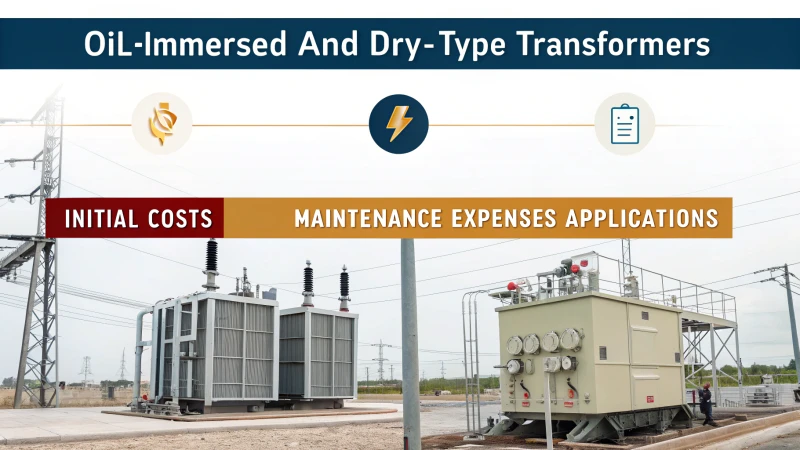
Oil-free transformers have garnered considerable attention for their eco-friendly features and superior safety compared to oil-immersed transformers. However, while they offer many advantages, such as reduced environmental risks and better sustainability, they are not without their challenges and limitations. Understanding these drawbacks is essential for utilities and industries to make informed decisions about which transformer technology to adopt for their power distribution needs.
In this article, we explore the key challenges and limitations associated with oil-free transformers, helping stakeholders assess their suitability for various applications.
1. Higher Initial Cost
One of the most significant challenges of oil-free transformers is their higher initial cost. While they can provide long-term savings due to lower maintenance and environmental benefits, the upfront investment can be considerably higher than oil-immersed transformers. This cost disparity can make it difficult for some companies or utilities to justify their adoption, particularly in regions where budget constraints are a concern.
The factors contributing to the higher cost of oil-free transformers include:
- Material Costs: Oil-free transformers often use advanced materials such as cast resin, solid insulating materials, and specialized coolants. These materials are typically more expensive than the mineral oil used in traditional transformers.
- Manufacturing Complexity: The design and manufacturing processes for oil-free transformers are often more complex, requiring specialized expertise and technology.
Despite these challenges, the total cost of ownership (TCO) of oil-free transformers may be lower over time due to reduced maintenance, fewer environmental liabilities, and longer service life.
2. Limited Voltage and Power Rating Options
Oil-free transformers are generally better suited for lower to medium voltage applications. When compared to traditional oil-immersed transformers, they are less capable of handling high-voltage and large-scale power transmission systems. Their insulation materials, such as cast resin or air, have limitations when it comes to supporting the high electrical stress that occurs in high-voltage environments.
- Voltage Rating Limitations: Oil-free transformers are usually limited to medium voltage levels (up to around 36 kV), with higher-voltage applications requiring more specialized insulation systems or larger physical sizes.
- Power Rating Constraints: The power handling capacity of oil-free transformers is also generally lower compared to oil-immersed transformers, which are widely used for high-power applications.
For industries or regions where high-power and high-voltage transformers are required, oil-free alternatives may not always be the best choice unless specific technologies like gas-insulated transformers are used.
3. Cooling Limitations
Oil-based transformers benefit from the natural cooling properties of mineral oil, which helps dissipate heat effectively during operation. In contrast, oil-free transformers rely on air cooling, solid insulation, or gas cooling, all of which can have limitations in high-load or extreme environmental conditions. Some of the cooling challenges include:
- Limited Heat Dissipation: While oil-free transformers are designed with effective cooling methods like natural convection or forced air systems, their heat dissipation capability might be less efficient than that of oil-immersed transformers in extremely high-load conditions.
- Size and Space Constraints: The cooling systems for oil-free transformers often require more space or larger surface areas compared to oil-based systems, which can be an issue in installations with limited space.
- Environmental Sensitivity: The performance of air-cooled or gas-insulated transformers can be affected by external temperature fluctuations, humidity, or dust, making them less reliable in harsh or extreme climates compared to oil-based designs.
Despite advancements in cooling technologies, ensuring efficient heat management remains a challenge for many oil-free transformers.
4. Limited Availability of Service and Support
Oil-free transformers, especially newer designs using dry-type or cast-resin technologies, may have limited availability of service support and spare parts in certain regions, especially in remote locations or developing markets. This is largely due to the relatively newer adoption of these technologies compared to traditional oil-immersed transformers, which have been in use for much longer.
- Service Network: The availability of skilled technicians and service providers familiar with oil-free transformer technologies may be less widespread than those with expertise in oil-immersed transformer maintenance.
- Parts Availability: While oil-free transformers are designed to require less frequent maintenance, when repairs are needed, the specialized parts required for repairs or upgrades may not be as readily available as parts for oil-immersed transformers.
This limited service infrastructure can increase downtime and repair costs for customers, particularly in areas where the technology is less established.
5. Performance in High-Temperature Environments
Oil-free transformers generally perform well in a variety of environmental conditions, but they can struggle in extremely high-temperature environments. While oil-immersed transformers benefit from the heat sink effect of oil, oil-free transformers need to rely on their alternative cooling systems, which may not provide the same level of temperature regulation in harsh climates.
- Heat Dissipation in Extreme Conditions: In very hot climates or areas with frequent extreme temperatures, oil-free transformers may require additional cooling measures, which could increase their cost and complexity.
- Thermal Insulation: The materials used for insulation in oil-free transformers are often less effective in preventing heat build-up compared to oil’s natural insulating and cooling properties. As a result, in areas where high heat generation is common, additional thermal management strategies may be necessary.
6. Maintenance and Inspection Complexity
Although oil-free transformers require less frequent maintenance than oil-immersed transformers, their maintenance processes can be more complex. Some of the challenges include:
- Inspection of Solid Insulation: Oil-free transformers often rely on solid insulating materials, which may require more detailed inspection to ensure the integrity of the insulation over time. Unlike oil-immersed transformers, where the oil level can serve as an indicator of health, oil-free transformers may need additional diagnostic tools and inspections.
- Monitoring for Overheating: Air-cooled transformers, while simpler to maintain than oil-based systems, can be more susceptible to overheating during periods of high load or poor ventilation. Monitoring these units requires additional attention to their cooling efficiency and ambient temperature conditions.
Thus, while these transformers require less frequent interventions, their diagnostic complexity can increase the need for specialized training and equipment for technicians.
7. Potential for Reduced Short-Circuit Withstand Strength
One of the limitations of oil-free transformers is their short-circuit withstand strength, which refers to their ability to withstand high fault currents without failure. Oil-immersed transformers tend to perform better under short-circuit conditions because the oil can help absorb the energy and dissipate the heat generated during such events.
- Structural Stress: In oil-free transformers, particularly those using solid resin or dry-type insulation, the structural components may face higher mechanical stress during short-circuit faults.
- Short-Circuit Protection: The lack of oil-based cooling can mean that oil-free transformers need additional protection systems (e.g., fuses, circuit breakers, or current-limiting devices) to prevent damage during such events.
This limitation makes them less suitable for some heavy-duty or industrial applications where high short-circuit withstand strength is crucial.
What Applications Are Best Suited for Oil-Free Transformers?
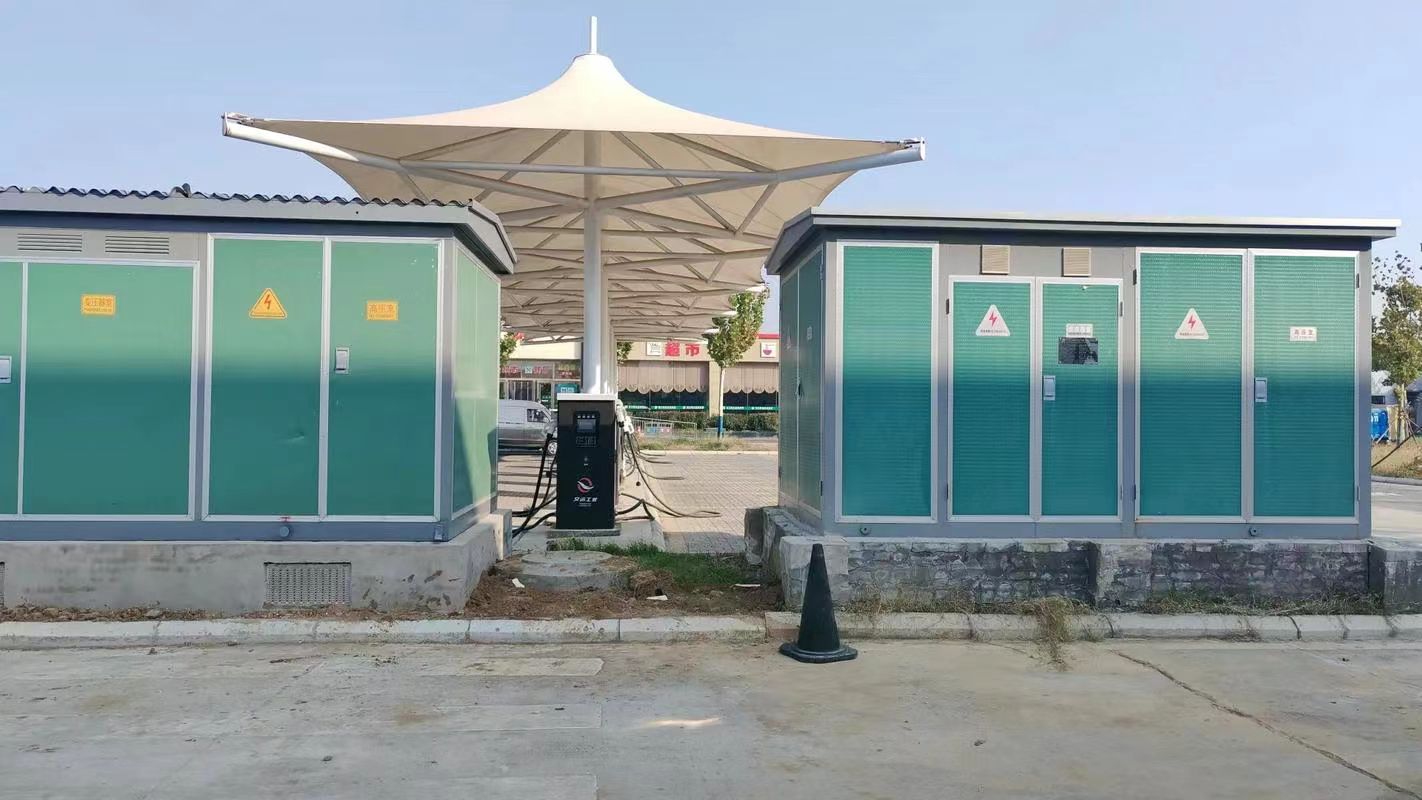
Oil-free transformers have become an increasingly popular choice for various electrical applications due to their environmental benefits, safety features, and reliability. Unlike traditional oil-immersed transformers, oil-free transformers use alternative insulation materials and cooling systems, making them an excellent choice for specific scenarios where environmental protection, space-saving, and safety are top priorities.
In this article, we’ll explore the best applications for oil-free transformers, where their unique advantages shine and can contribute to efficient and sustainable energy management.
1. Renewable Energy Systems
Oil-free transformers are particularly well-suited for renewable energy applications, where sustainability is a key factor in system design. These transformers are often used in environments where the goal is to minimize the use of toxic or hazardous materials, making them a perfect match for solar power, wind energy, and hydropower installations.
- Solar Power Plants: Oil-free transformers are commonly used in solar power plants to convert the generated electricity from low-voltage direct current (DC) to higher-voltage alternating current (AC) suitable for grid integration. Their compact design and environmentally friendly nature are a perfect fit for renewable energy systems where space and environmental considerations are paramount.
- Wind Turbines: Wind turbines also benefit from oil-free transformers because of the smaller size and low maintenance requirements of dry-type transformers. Their ability to operate in varying environmental conditions (e.g., high altitudes or offshore sites) without the risk of oil leakage or contamination makes them ideal for wind farms.
- Hydropower Plants: In hydropower installations, oil-free transformers are used to step up the voltage of generated electricity before it is transmitted to the grid. Given that many hydropower stations are located in remote or ecologically sensitive areas, the safety and environmental benefits of oil-free transformers are a significant advantage.
By eliminating the need for oil, these transformers help reduce the overall carbon footprint and contribute to the sustainability goals of renewable energy sources.
2. Urban and Residential Areas
In urban or residential areas, where space is limited and safety concerns are high, oil-free transformers are a valuable solution. Their compact and sealed design allows them to be installed in environments where oil-based transformers might pose safety hazards or require excessive maintenance.
- Urban Power Distribution: Oil-free transformers are often used in substations located in cities where minimizing fire hazards and environmental risks is critical. Their lack of oil means that they pose no risk of oil leakage, reducing the potential for damage to surrounding infrastructure.
- Residential Neighborhoods: In densely populated residential areas, the compact size and low-maintenance requirements of oil-free transformers make them ideal for use in local distribution systems. They can be installed in underground vaults or compact enclosures, helping conserve space and improving aesthetics in urban environments.
- High-Rise Buildings: Oil-free transformers are also used in high-rise buildings where limited space and strict safety regulations make the use of oil-immersed transformers challenging. These transformers provide a reliable, safe, and environmentally friendly power distribution solution for commercial and residential complexes.
In these applications, the low fire risk, compact size, and reduced environmental impact of oil-free transformers make them the ideal choice for high-density urban areas.
3. Industrial and Commercial Facilities
Oil-free transformers are well-suited for a variety of industrial and commercial applications, particularly in environments where safety, low maintenance, and environmental responsibility are critical.
- Data Centers: Data centers demand uninterrupted power supply and stringent safety standards due to the sensitive nature of the equipment they house. Oil-free transformers are used in data centers to power servers, cooling systems, and communication networks without the risks associated with oil-based transformers, such as leakage or contamination. Their low maintenance and environmentally friendly design make them highly desirable in these settings.
- Manufacturing Plants: In manufacturing plants, especially those dealing with high-precision equipment or sensitive production processes, oil-free transformers are used to provide stable and reliable electrical power. The compact design and ability to operate in harsh conditions make them suitable for factories where space is at a premium and maintenance downtime must be minimized.
- Airports: Airports often utilize oil-free transformers for their power distribution systems. These transformers provide the necessary electrical supply to critical systems, such as lighting, security, and communication, without introducing the risks associated with oil leaks, which could be a safety concern in such high-traffic areas.
The safety, reliability, and low maintenance features of oil-free transformers make them a good fit for many industrial and commercial applications.
4. Oil and Gas Industry
In the oil and gas industry, particularly in offshore platforms or remote areas, oil-free transformers are favored due to the strict safety regulations and environmental considerations. These transformers eliminate the risks of oil spills and contamination, which is crucial in sensitive environments.
- Offshore Oil Platforms: Offshore oil rigs and platforms require highly reliable and robust electrical equipment due to harsh conditions and the need for continuous operation. Oil-free transformers are ideal because they reduce the risk of oil leakage into the ocean, which could lead to environmental disasters.
- Remote Oil Fields: In remote oil field locations, where logistical support can be limited, oil-free transformers offer a reliable, low-maintenance solution. Their design ensures that they can function efficiently in remote locations without requiring extensive servicing or oil refills, making them highly suited for off-the-grid installations.
The safety and environmental advantages make oil-free transformers a preferred choice in the oil and gas sector, where both operational and ecological risks need to be minimized.
5. Electric Vehicles (EV) Charging Stations
The transition to electric vehicles (EVs) is creating a growing demand for EV charging infrastructure, where the safe, reliable, and efficient distribution of electricity is critical. Oil-free transformers are increasingly being used in EV charging stations to ensure that high-voltage power is safely stepped down for vehicle charging.
- Compact and Space-Saving: EV charging stations often have limited space, especially in urban environments. Oil-free transformers’ compact design allows for easy installation, even in tight spaces.
- Environmental Benefits: As sustainability is a core goal of the electric vehicle movement, using oil-free transformers aligns with environmental protection efforts by eliminating the use of hazardous oil and reducing the risk of contamination.
In this application, oil-free transformers provide a safe, efficient, and eco-friendly solution for EV charging infrastructure.
6. Marine and Railway Applications
Oil-free transformers are also used in marine and railway systems, where safety, reliability, and environmental concerns are paramount. Their resilience to extreme environments, low maintenance, and compact design make them ideal for these applications.
- Marine: Oil-free transformers are used on ships and marine vessels to step up or step down voltage for onboard electrical systems. Their sealed and oil-free design ensures that there is no risk of leakage or contamination in the marine environment.
- Railways: In railway systems, especially those with high-speed trains, oil-free transformers are used to power trackside equipment and train systems. Their reliable operation and compact size make them ideal for installation in stations, substations, or along tracks.
These applications benefit from the space-saving, safety, and reduced maintenance needs of oil-free transformers.
Conclusion
Oil-free transformers offer a promising alternative to traditional oil-immersed transformers, addressing both environmental and safety concerns. By eliminating the need for oil, these transformers reduce the risk of fires, leaks, and contamination, making them ideal for environmentally sensitive applications. Moreover, the adoption of solid insulation materials or eco-friendly fluids contributes to sustainable energy solutions. While they may come with higher initial costs and certain capacity limitations, the long-term benefits, including lower maintenance requirements and enhanced safety, make oil-free transformers an attractive choice for modern power distribution systems. As the demand for green technologies increases, oil-free transformers are expected to play a larger role in the future of power infrastructure.
FAQ
Q1: What is an oil-free transformer?
A1: An oil-free transformer, also known as a dry-type transformer, is a type of transformer that does not use oil for insulation or cooling. Instead, it relies on air or other solid materials for insulation and cooling, making it a safer and more environmentally friendly option.
Q2: What are the key advantages of oil-free transformers over oil-immersed transformers?
A2: Oil-free transformers offer several advantages, including improved safety (no risk of oil leaks or fires), reduced environmental impact (no oil disposal concerns), lower maintenance costs, and better performance in enclosed spaces or areas with fire risks. They are also more energy-efficient and eco-friendly.
Q3: How do oil-free transformers provide insulation and cooling without oil?
A3: Oil-free transformers use solid insulating materials, such as resin or dry insulation, to provide electrical insulation. Cooling is achieved through air circulation, either natural or forced, depending on the design. Some advanced oil-free transformers use other cooling techniques like natural convection or synthetic solid dielectric materials.
Q4: Where are oil-free transformers commonly used?
A4: Oil-free transformers are commonly used in environments where fire safety is a priority, such as in residential areas, commercial buildings, underground spaces, or offshore platforms. They are also used in areas with strict environmental regulations or where oil leakage could cause contamination.
Q5: Are oil-free transformers more expensive than oil-immersed transformers?
A5: Yes, oil-free transformers typically have a higher initial cost compared to oil-immersed transformers due to their advanced design and materials. However, their lower maintenance costs, improved safety, and long-term environmental benefits often make them a more cost-effective option in the long run.
References
"What are Oil-Free Transformers and How Do They Work?" - https://www.transformertech.com/oil-free-transformers - Transformer Tech
"The Advantages of Dry-Type Transformers" - https://www.powermag.com/dry-type-transformers-benefits - Power Magazine
"Understanding the Benefits of Oil-Free Transformers" - https://www.electrical4u.com/oil-free-transformers-advantages - Electrical4U
"Oil-Free Transformers: A Safer and Greener Alternative" - https://www.researchgate.net/oil-free-transformers-benefits - ResearchGate
"Comparing Oil-Immersed vs Oil-Free Transformers" - https://www.sciencedirect.com/oil-free-vs-oil-immersed-transformers - ScienceDirect
"Oil-Free Transformers: A Sustainable Solution for the Future" - https://www.smartgridnews.com/oil-free-transformers-sustainability - Smart Grid News
"Choosing Oil-Free Transformers for Sensitive and Hazardous Locations" - https://www.energycentral.com/c/ee/oil-free-transformers - Energy Central
"The Future of Eco-Friendly Transformers: Oil-Free Technology" - https://www.powergrid.com/oil-free-transformer-technology - PowerGrid


